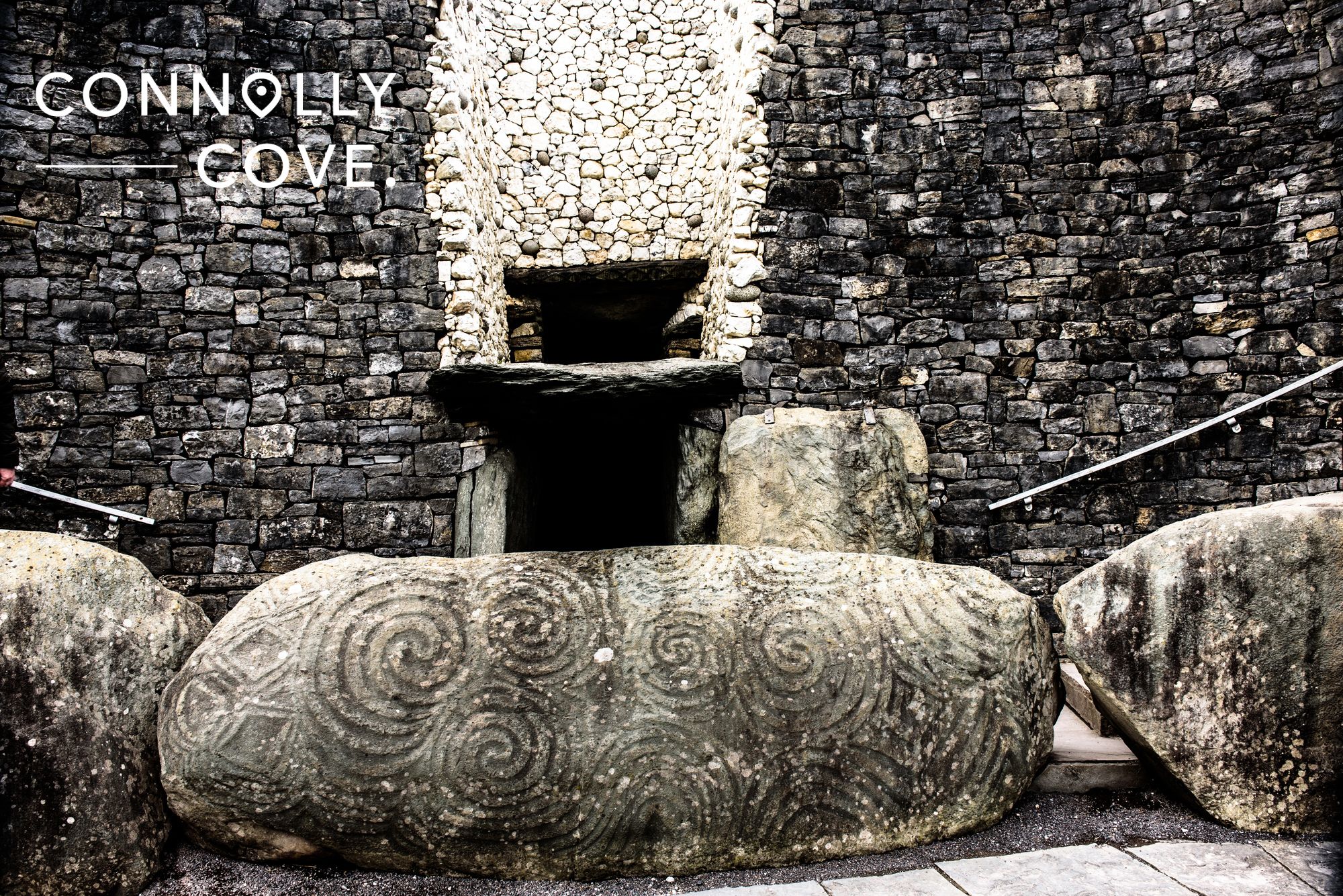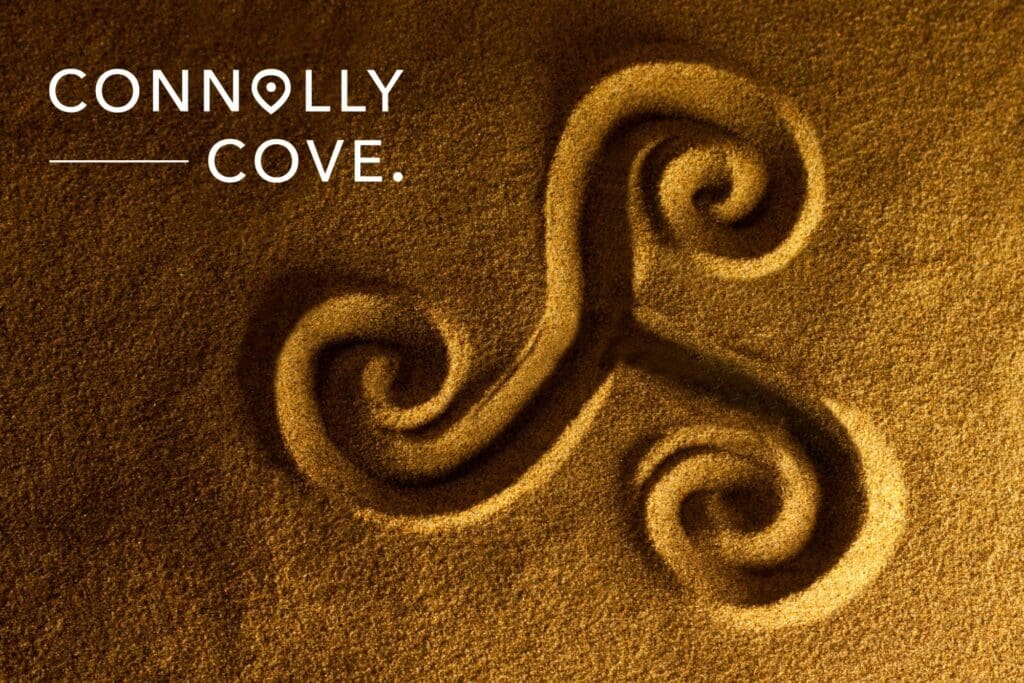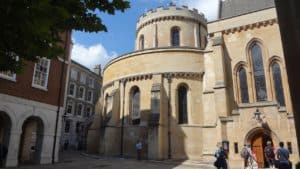The Triskele: Understanding the Symbolism and Meaning of the Iconic Celtic Symbol!

Updated On: April 29, 2024 by Esraa Mahmoud
What’s the meaning of the famous Triskeles? The Triskele is one of the iconic symbols of the Celtic culture, a culture that is famous for having such a fascinating history and symbols that whisper tales of time and transformation.
The Triskele is an ancient Celtic symbol that has deep roots in pre-Christian Europe, dating back to the Neolithic age. The Triskele was used in various periods throughout Celtic history, from Classical Antiquity to the medieval period. It appeared on objects such as jewellery, coins, pottery, illuminated manuscripts, shields, and armour.
To delve into the meaning of the Triskele is to embark on a journey through the very soul of the vibrant Celtic culture, unravelling layers of symbolism and encountering a tapestry rich in mythology, nature, and the cyclical rhythms of life. So, what’s the history of the Triskele, and what does it mean? Let’s find out!
The History and Origin of the Triskele Symbol
The Triskele symbol is an ancient symbol that has been associated with Celtic and pre-Celtic cultures, particularly those from the British Isles and parts of Western Europe. The symbol is also known as the Triskelion or the Celtic Spiral, and it is a symbol that consists of three spirals or legs that are interconnected.
The Triskele symbol is believed to have originated in Ireland around 2,500 years before the Celts arrived in Ireland. The Celts used the emblem in their carvings, artwork, and some metalwork. The most likely interpretation of why they adopted the Triskelion symbol is that it has three distinct sections, and the Celts believed everything of importance came in threes. To further understand the rich history of the Triskele symbol, here is a timeline of its appearance in the Celtic culture.
Prehistoric Origins (circa 3200 BCE – 500 BCE):
The earliest known appearances of the Triskele symbol date back to the Neolithic period, around 3200 BCE. Artefacts such as pottery and stone carvings featuring the Triskele have been found across the British Isles, particularly in areas associated with Celtic influence, like Ireland and Scotland.
Celtic Expansion and Influence (circa 500 BCE – 400 CE):
During the Iron Age, Celtic tribes expanded across Europe, influencing diverse regions. The Triskele symbol became increasingly prevalent in Celtic art, appearing on items like coins, jewellery, weaponry, and religious items.
The symbol’s usage expanded in areas under Celtic control or cultural influence, emphasising its significance within Celtic societies across different territories.
Roman Conquest and Christianization (circa 1st century CE – 5th century CE):
With the Roman conquest of Celtic lands, particularly in Gaul (modern-day France) and parts of Britain, cultural dynamics shifted. Celtic art and symbolism, including the Triskele, faced challenges as Roman influence spread.
The spread of Christianity from the 5th century CE onwards brought about changes in religious practices. Many pagan symbols, including the Triskele, were either assimilated into Christian contexts or diminished in significance.
Medieval Era and Revival (5th century CE – 18th century CE):
Despite the decline of Celtic paganism and the diminishing use of pagan symbols, remnants of Celtic art and symbolism, including the Triskele, persisted in various forms, including in manuscripts like the Book of Kells.
Throughout the medieval era, Celtic culture experienced a revival in art, literature, and cultural expressions, leading to the reemergence of Celtic motifs, including the Triskele, in both traditional and contemporary contexts.
Modern Era and Contemporary Usage (18th century CE – present):
The 18th century onwards witnessed an increased interest in Celtic heritage, folklore, and symbolism, leading to a resurgence of the Triskele and other Celtic symbols in various art forms, jewellery, tattoos, and cultural representations.
Scholars, antiquarians, and artists became intrigued by Celtic history and sought to preserve and revive elements of this rich cultural tapestry. Artists and writers during this period began to incorporate Celtic motifs, including the Triskele, into their works. These symbols were often used in illuminated manuscripts, paintings, and decorative arts, blending elements of Celtic design with contemporary artistic styles.
The Triskele and other Celtic symbols became associated with a sense of mysticism, spirituality, and romanticism. Moreover, these symbols were adopted as markers of national identity for Celtic regions, especially in Scotland, Wales, Ireland, and Brittany.
The Symbolism and Meaning of Triskeles in Celtic Culture
Far from mere decoration, the symbol carries within it a universe of meaning, a kaleidoscope of interpretations as rich and varied as the cultures that embraced it.
Whether beckoning us to contemplate the endless cycle of life, death, and rebirth or urging us to seek harmony within and with the world around us, the Triskele is at the heart of Celtic symbolism, whispering secrets from a long-forgotten past. The symbol holds various interpretations in Irish culture.
Harmony and Wholeness
The interconnectedness of the three spirals in the Triskele isn’t just aesthetics; it’s a profound representation of unity and balance. It reflects the Celtic belief in the interrelation of all things, from the tiniest blade of grass to the celestial dance of stars.
Each spiral, though distinct, is integral to the whole, reminding us that our actions and choices ripple outwards, impacting the world around us.
This connection also signifies harmony, a delicate dance between opposing forces that maintains cosmic order. The symbol became a visual reminder to seek balance within ourselves, respecting the interwinding of our physical, mental, and spiritual aspects and striving for harmony with the world around us.
The Triple Goddess

The origin of the Triple Goddess permeates Celtic mythology, embodying the feminine principle in its three stages: the youthful Maiden, the nurturing Mother, and the wise Crone. The Triskelion, with its three distinct yet unified arms, mirrors this powerful archetype.
Each spiral reflects a different stage of the goddess’s cycle, encompassing birth, creation, and transformation. It represents not just womanhood but the ever-evolving journey of life itself, where we cycle through moments of innocence, experience, and wisdom.
The Triskelion, therefore, becomes a symbol of guidance and strength, reminding us that within each of us resides the potential for boundless transformation and the wisdom gleaned from life’s cycles.
Representing Cycles and Movement
For the Celts, the number three wasn’t simply a count, it was a potent symbol of cosmic order and eternal dance. The swirling spirals of the Triskelion echo this principle, mirroring the endless cycle of life, death, and rebirth. It whispers of new beginnings within endings, reminding us that even as seasons change and leaves fall, there’s always the promise of fresh spring growth.
This cyclical rhythm extends beyond individual lives, weaving into the fabric of the universe itself. The three spirals can also represent triads like the past, the present, and the future, acting as a kind of acknowledgement of the flow of time and embracing the present moment.
Other Interpretations in Irish Culture
In Irish culture, there are various other interpretations of the symbol besides what we have mentioned so far. One interpretation suggests that it represents the three realms of existence: land, sea, and sky. These realms are significant in Celtic mythology and symbolise different aspects of life.
Another interpretation ties the Triskele to the three main Celtic deities: Lug, Danu, and Ogma. It is believed that these deities govern different aspects of human life, such as wisdom, strength, and creativity.
Additionally, some see the Triskele as a symbol of eternal movement or continuous progress. It represents the idea that life is constantly evolving and changing. Overall, the Triskele’s significance in Irish culture reflects its deep connection to Celtic spirituality, traditions, and heritage.
Modern Usage of the Triskele symbol

In modern times, the Triskele symbol continues to hold fundamental meaning and is widely used in various contexts. Its intricate design and connection to Celtic culture make it popular among those interested in history and spirituality. From personal adornment to corporate logos, the Triskele continues to inspire, evolve, and connect us to the timeless themes it embodies.
Fashioning a Connection
Perhaps the most personal embrace of the Triskele can be found in the world of fashion and jewellery. Necklaces, bracelets, and earrings adorned with the symbol are ubiquitous and can be seen all over the world worn by those seeking a connection to its rich meanings. Some might be drawn to the cyclical symbolism, finding solace in the reminder of life’s ever-turning wheel.
Others might resonate with the concept of harmony, seeking to balance their inner energies through the interconnected spirals. Still, others might find strength and wisdom in the image of the Triple Goddess, wearing the Triskele as a personal talisman, or simply because of their admiration of the symbol’s exquisite appearance.
Branding with Meaning
The Triskele has also found its way into the world of branding and corporate logos, where its symbolism resonates with companies seeking to convey specific values. Perhaps a tech startup embraces the dynamic flow of the spirals to represent its commitment to progress and innovation.
It could also be an environmental organisation that might choose the Triskele to embody its belief in interconnectedness and respect for the delicate balance of the natural world. Even a healthcare firm could find purpose in the symbol, its cyclical nature reflecting the ongoing process of healing and growth.
Art and Expression
The Triskele continues to inspire artists across various mediums. From intricate tattoos that etch its mesmerising form onto skin to captivating murals adorning city walls, the symbol adds depth and meaning to artistic expression. Some artists like to use it as an expression of delving into the spiritual realms, using the Triskele as a gateway to explore concepts of rebirth and cosmic order.
Others might like it to emphasise its connection to nature, weaving the spirals into landscapes and wildlife imagery. At the same time, others like to use the Triskele as a symbol of individual journeys, growth, and the pursuit of wisdom.
Beyond Borders and Cultures
The modern embrace of the Triskele isn’t limited to its Celtic roots. The symbol’s universality and adaptability allow it to resonate with diverse cultures and individuals seeking deeper meaning. In the country of Japan, for example, the Triskele might take on associations with the three aspects of the universe (heaven, earth, and humanity).
In the Basque Country, the Lauburu, a variation of the Triskele, signifies the four elements and cardinal directions. Even in modern pagan and spiritual movements, the Triskele is often adopted as a symbol of interconnectedness and cosmic harmony.
In conclusion, the Triskele holds great significance in Celtic culture. It symbolises spirituality and represents concepts like life, death, and rebirth. Through its intricate design, it also symbolises strength and progress. The Triskele has deep roots in ancient Celtic beliefs and continues to be used by various groups today. Its rich symbolism makes it a fascinating motif to explore in understanding Celtic traditions and heritage.






